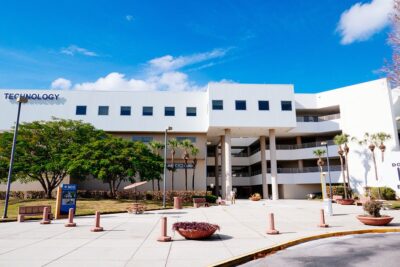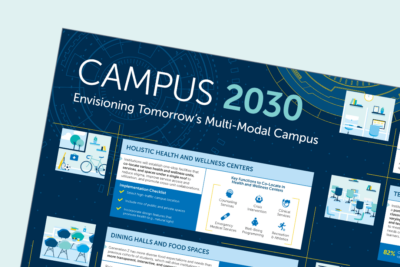Improving sustainability efforts with a green revolving fund
Sustainability funding remains a top priority for many higher education institutions. One way institutions can provide consistent support for sustainability is to maintain a green revolving loan. Harvard University’s green revolving fund, which we profiled in a previous study, is potentially the most well-known example.
Harvard’s loan program funds projects that reduce utility consumption, waste removal, or operating costs. In return, facilities leaders must pay back the loan within 11 years. The program, which changed significantly since its initial launch, continues to evolve. Most recently, Harvard tweaked the application process to encourage leaders to consider the long-term implications of their project.
Building a better green fund
The current green revolving fund is the second iteration of the program. In 1993, Harvard implemented a Resource Conservation Incentive Program. This $1.5 million, interest-free revolving loan fund supplemented unit-level facilities directors’ operating budgets for retrofit projects often considered lower priority.
Despite a surge in interest within the first year, funding requests declined in the subsequent three years. Harvard set out to understand why.
Resolving barriers to participation
Leaders identified two primary barriers to participation in the program. The first barrier is information asymmetries. These asymmetries often occurred because facilities leaders lacked the sufficient information needed to submit project-funding requests. Facilities leaders were also unaware about the completion status of low-hanging fruit projects. What’s more, they could not identify projects that met funding criteria and other cost savings opportunities.
Second, applicants commonly expressed concerns about available resources. Facilities leaders assumed that the application process required a significant resource investment, including time and staff. They were reluctant to divert scarce resources from immediate facilities’ needs. They were equally wary about the significant administrative burden involved with an application submission, such as the need to build the business case and financial modeling.
Recasting the loan program to overcome resource concerns
In response to these concerns, Harvard redesigned the program in two primary ways:
1. Relaunched the loan as the Green Revolving Fund
In 2001, Harvard relaunched the initiative with a centralized, intuitive website that hosts a template for the project proposal process. Harvard also provided dedicated, on-call support to assist facilities directors with financial modeling and business case construction.
2. Constructed regular best practice sharing
Harvard introduced regular opportunities for facilities leaders to share project results and lessons learned, reducing information gaps and fostering a stronger culture of collaboration around sustainability.
Application process improvements
In recent years, Harvard also focused on how to update the application process. The Harvard Lifecycle Cost Calculator, a required part of the application, takes assumptions of cost and utility consumption as inputs and returns the estimated cost of ownership of a building over time with and without the proposed project.
The calculator then outputs information related to the economic impact of energy conservation measures over a 20-year time span. This new application highlights Harvard’s focus on using data-informed decisions to build each project’s financial case.
In addition to financial information, the application outlines two expectations for projects funded through a green revolving loan:
- Projects must include educational co-benefits and/or behavioral changes
- Applicants must demonstrate post-project measurement and verification data to enable clear project results and to maintain accountability, as well as support the submission of case study and web article plans
Both of these updates ensure that projects receive the necessary investment required to maintain the fund in perpetuity. The fund currently stands at $12 million.
More Resources

Putting the Built Environment to Best Use

Campus 2030: Envisioning tomorrow’s multi-modal campus
